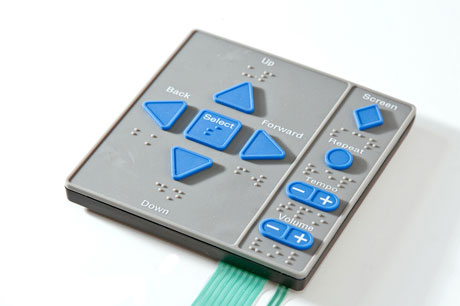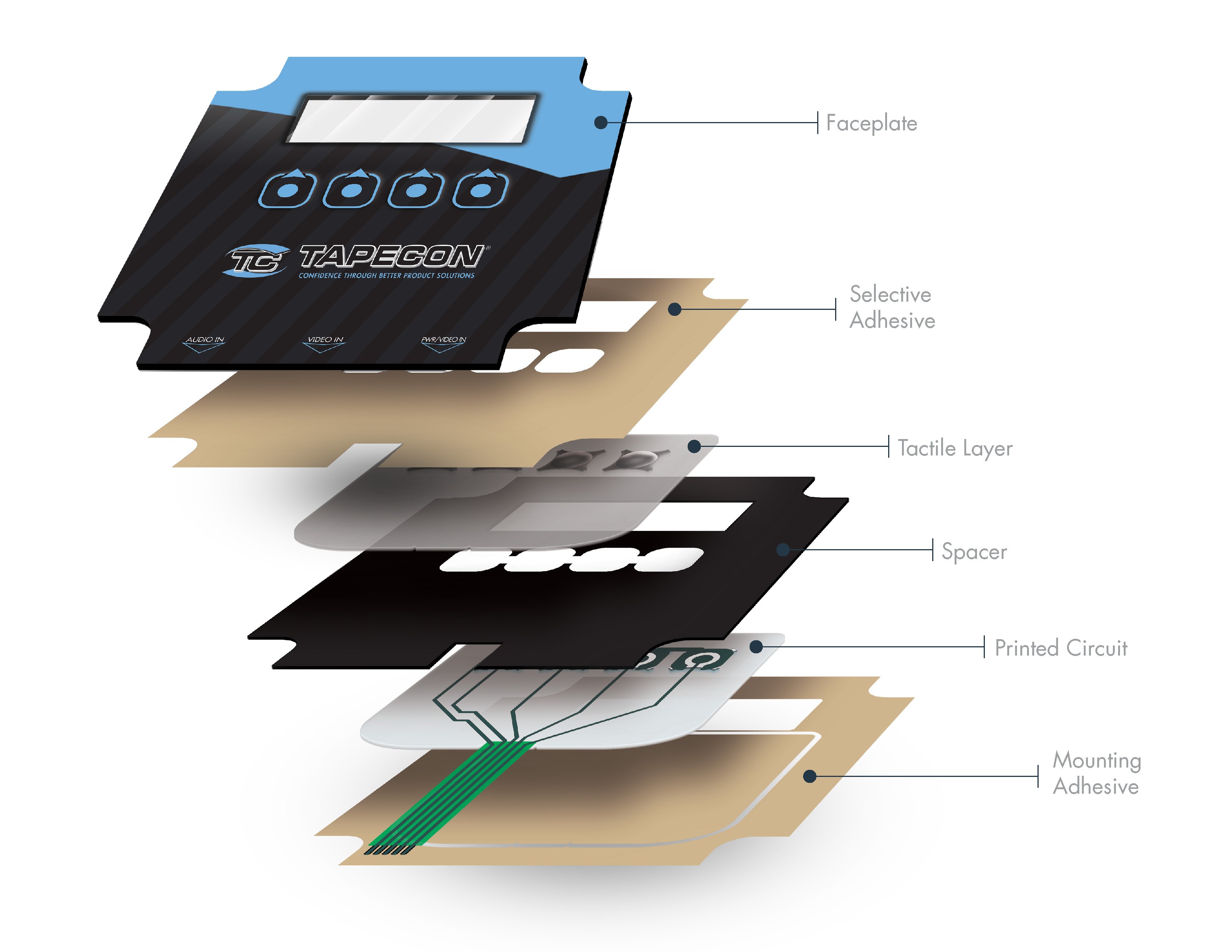How Membrane Switches Are Revolutionizing User Interface Design
How Membrane Switches Are Revolutionizing User Interface Design
Blog Article
Recognizing the Importance of Membrane Switches in Interface
Membrane buttons are indispensable parts in the design of reliable interface, facilitating not only capability yet also improving visual appeal and individual interaction. Their special attributes, such as resistance to personalized layouts and ecological elements, make them ideal for a varied array of applications throughout several industries. As we check out the numerous advantages and future trends related to Membrane technology, it becomes clear that these switches are more than just elements; they represent a merging of technology and usefulness. The ramifications of this innovation on individual experience are worth checking out additionally.
What Are Membrane Switches?

The spacer layer, which consists of adhesive properties, permits the splitting up of the circuit layer from the overlay, guaranteeing that the button stays in a non-activated state up until pushed. When stress is put on the overlay, it compresses the spacer layer, connecting the space and completing the circuit in the underlying layer. This style not just minimizes the physical room required for standard mechanical switches yet additionally improves the toughness of the tool, as Membrane buttons are normally resistant to dust, dampness, and various other environmental elements.
Frequently located in applications ranging from customer electronic devices to medical gadgets, Membrane switches are important to contemporary innovation, offering a easy to use and efficient interface that lines up with modern design needs.
Advantages of Membrane Switches
While countless button modern technologies exist, Membrane Switches offer distinctive advantages that make them especially preferable in numerous applications. One of the main advantages of Membrane buttons is their compact layout, which enables space-saving implementations in gadgets where property is restricted. Their thin profile not only enhances aesthetic charm but additionally assists in lightweight construction.
One more substantial benefit is their resistance to environmental variables. Membrane buttons are normally secured versus wetness, dust, and contaminants, making them suitable for usage popular settings, such as medical gadgets and industrial devices. This longevity prolongs the life-span of the button, decreasing upkeep prices and boosting integrity.
In addition, Membrane switches can be customized to fulfill specific style demands, including special graphics and colors that boost user interaction. Their responsive responses alternatives can also be customized to offer a satisfying customer experience. Additionally, Membrane buttons are cost-effective, particularly in high-volume applications, as they can be generated successfully.
Applications in Various Industries

In the consumer electronics industry, Membrane switches are prevalent in tools such as microwaves, washing makers, and remote controls. Their responsive comments and visual choices enhance individual experience while providing a smooth, modern look. In addition, automotive producers utilize Membrane switches in dashboard controls and infotainment systems, where area is restricted, and individual engagement is important.
In addition, the industrial sector leverages Membrane switches in control panels for machinery and devices, permitting intuitive procedure in frequently severe settings. Their resistance to chemicals and wetness makes certain durability and reliability in these applications. Generally, the versatility of Membrane Switches adds substantially to their widespread usage, making them crucial in numerous technical domains.
Design Considerations for Membrane Buttons

When developing Membrane buttons, numerous essential factors to consider need to be taken into consideration to ensure ideal performance and user experience. Firstly, the choice of materials is essential; choosing sturdy, high-grade substrates can enhance the switch's longevity and resistance to environmental aspects such as wetness and temperature variations.
Secondly, the design of the visuals overlay must prioritize clarity and convenience of usage. Symbols and text have to be understandable, and the format ought to facilitate intuitive communication (membrane switches). look at these guys Furthermore, tactile feedback is essential; including a tactile dome or other systems can improve the customer experience by providing physical verification of activation
One more essential factor is the button's electric performance. Developers should ensure that the conductive traces are appropriately designed to reduce resistance and avoid signal disturbance. This involves analyzing the called for actuation pressure and ensuring compatibility with the electronic parts they will certainly interface with.

Future Patterns in Membrane Innovation
As innovation remains to breakthrough, Membrane switches are positioned to evolve substantially, driven by developments in products and manufacturing methods. One emerging fad is the incorporation of innovative materials, such as conductive inks and versatile substratums, which enhance toughness and reduce the overall weight of Membrane switches. These materials not just boost the responsive feedback but also permit for the style of buttons that can withstand harsher environmental conditions.
In addition, the assimilation of touch-sensitive innovations is changing standard Membrane Switches right into more he said interactive user interfaces. Capacitive touch sensing units embedded within Membrane switch panels can supply a more intuitive and receptive user experience, lining up with the expanding demand for smooth, contemporary layouts in customer electronic devices.
Additionally, advancements in printing strategies, such as electronic and 3D printing, make it possible for fast prototyping and personalization of Membrane buttons. This flexibility enables suppliers to react a lot more rapidly to market demands and customer choices.
Lastly, sustainability is ending up being a significant emphasis, with suppliers checking out environmentally friendly materials and procedures. As these trends unfold, the future of Membrane modern technology assures boosted performance, aesthetic appeal, and environmental duty, solidifying their duty in advanced customer interfaces across various industries.
Conclusion
To conclude, Membrane Switches represent a vital part in the layout of customer interfaces, integrating functionality with visual adaptability. Their advantages, consisting of sturdiness and resistance to environmental factors, make them ideal for varied applications throughout different sectors. Furthermore, thoughtful style considerations enhance user communication and experience. As advancements in technology proceed, the advancement of Membrane switches is expected to more refine interface, driving innovation and enhancing use in an increasingly complicated technological landscape.
Membrane buttons are important elements in the design of effective user interfaces, assisting in not just performance but additionally improving aesthetic appeal and customer communication.Membrane Switches offer as an essential component in different user interfaces, facilitating a seamless communication between customers and digital gadgets.While numerous button technologies exist, Membrane Switches deal unique advantages that make them specifically desirable in numerous applications.Moreover, Membrane switches can be personalized to meet particular style requirements, including one-of-a-kind graphics and colors that improve customer interaction.In final thought, Membrane Switches represent a vital element in the design of individual interfaces, integrating functionality with aesthetic flexibility.
Report this page